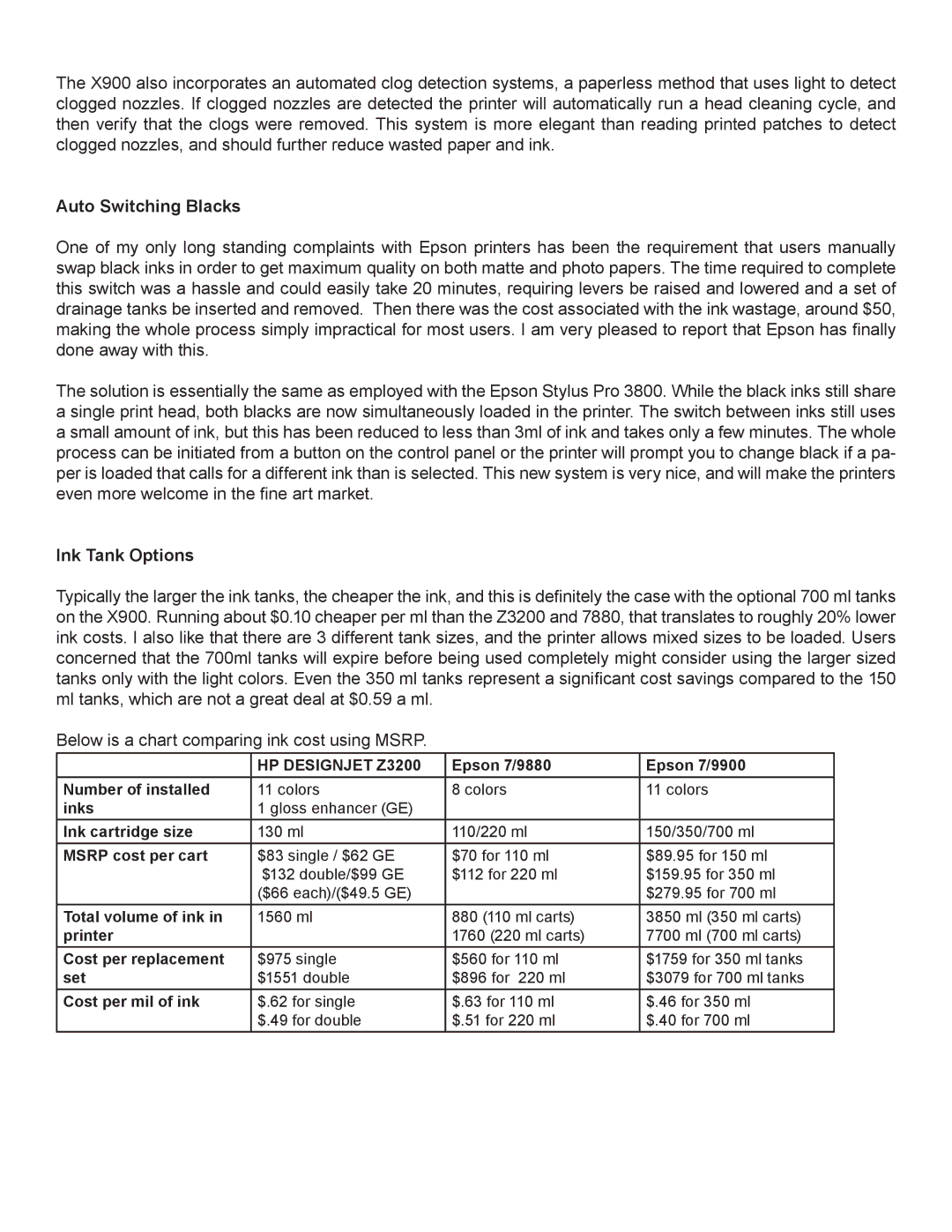The X900 also incorporates an automated clog detection systems, a paperless method that uses light to detect clogged nozzles. If clogged nozzles are detected the printer will automatically run a head cleaning cycle, and then verify that the clogs were removed. This system is more elegant than reading printed patches to detect clogged nozzles, and should further reduce wasted paper and ink.
Auto Switching Blacks
One of my only long standing complaints with Epson printers has been the requirement that users manually swap black inks in order to get maximum quality on both matte and photo papers. The time required to complete this switch was a hassle and could easily take 20 minutes, requiring levers be raised and lowered and a set of drainage tanks be inserted and removed. Then there was the cost associated with the ink wastage, around $50, making the whole process simply impractical for most users. I am very pleased to report that Epson has finally done away with this.
The solution is essentially the same as employed with the Epson Stylus Pro 3800. While the black inks still share a single print head, both blacks are now simultaneously loaded in the printer. The switch between inks still uses a small amount of ink, but this has been reduced to less than 3ml of ink and takes only a few minutes. The whole process can be initiated from a button on the control panel or the printer will prompt you to change black if a pa- per is loaded that calls for a different ink than is selected. This new system is very nice, and will make the printers even more welcome in the fine art market.
Ink Tank Options
Typically the larger the ink tanks, the cheaper the ink, and this is definitely the case with the optional 700 ml tanks on the X900. Running about $0.10 cheaper per ml than the Z3200 and 7880, that translates to roughly 20% lower ink costs. I also like that there are 3 different tank sizes, and the printer allows mixed sizes to be loaded. Users concerned that the 700ml tanks will expire before being used completely might consider using the larger sized tanks only with the light colors. Even the 350 ml tanks represent a significant cost savings compared to the 150 ml tanks, which are not a great deal at $0.59 a ml.
Below is a chart comparing ink cost using MSRP.
| HP DESIGNJET Z3200 | Epson 7/9880 | Epson 7/9900 |
Number of installed | 11 colors | 8 colors | 11 colors |
inks | 1 gloss enhancer (GE) |
|
|
Ink cartridge size | 130 ml | 110/220 ml | 150/350/700 ml |
MSRP cost per cart | $83 single / $62 GE | $70 for 110 ml | $89.95 for 150 ml |
| $132 double/$99 GE | $112 for 220 ml | $159.95 for 350 ml |
| ($66 each)/($49.5 GE) |
| $279.95 for 700 ml |
Total volume of ink in | 1560 ml | 880 (110 ml carts) | 3850 ml (350 ml carts) |
printer |
| 1760 (220 ml carts) | 7700 ml (700 ml carts) |
Cost per replacement | $975 single | $560 for 110 ml | $1759 for 350 ml tanks |
set | $1551 double | $896 for 220 ml | $3079 for 700 ml tanks |
Cost per mil of ink | $.62 for single | $.63 for 110 ml | $.46 for 350 ml |
| $.49 for double | $.51 for 220 ml | $.40 for 700 ml |
